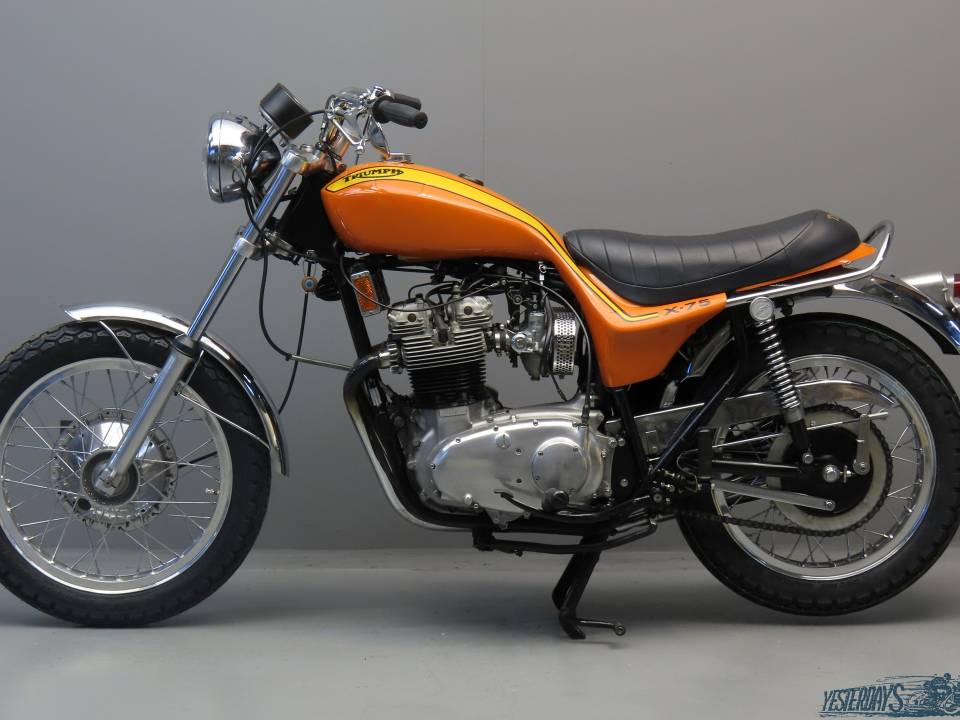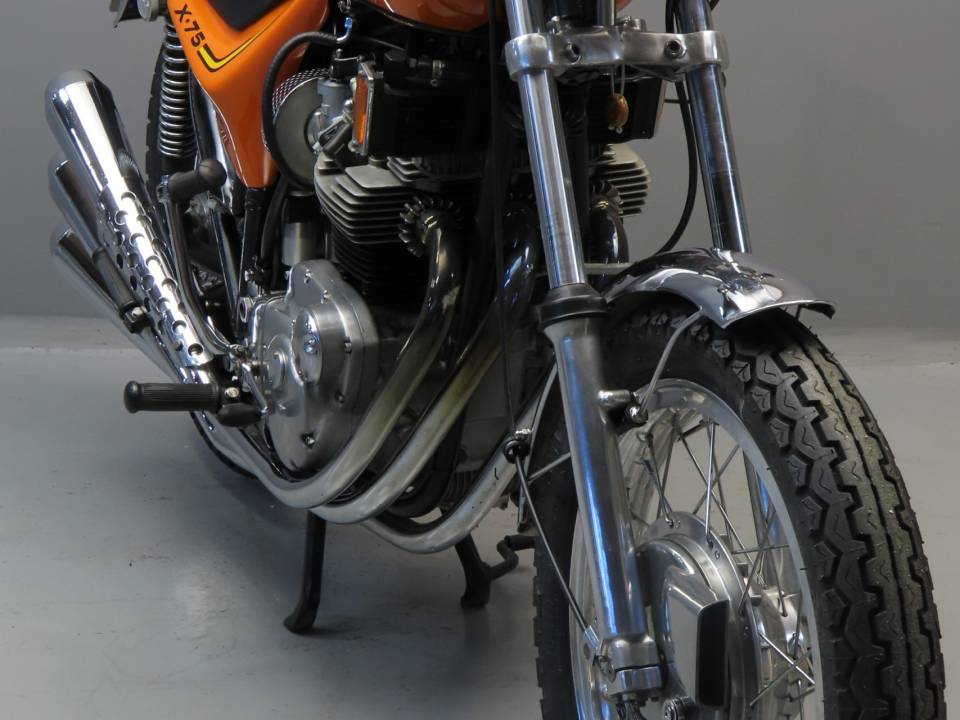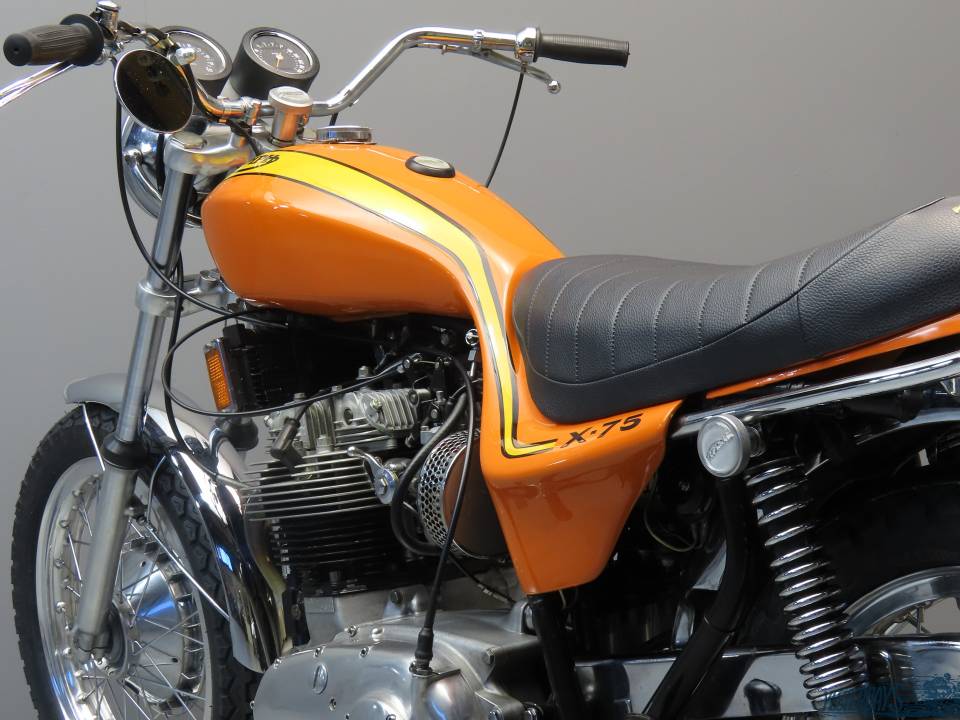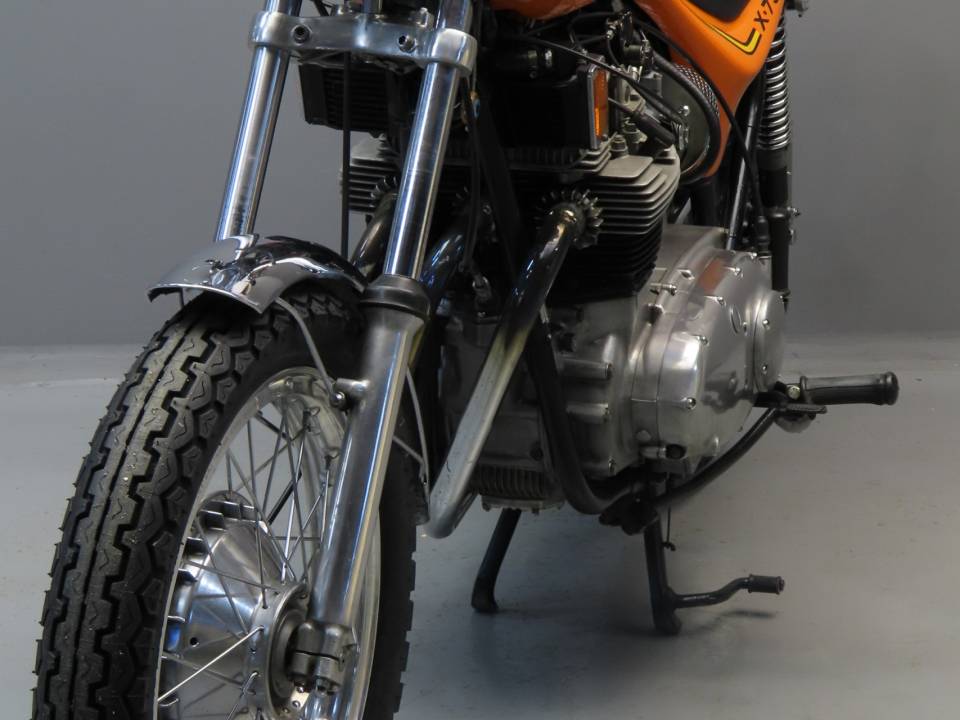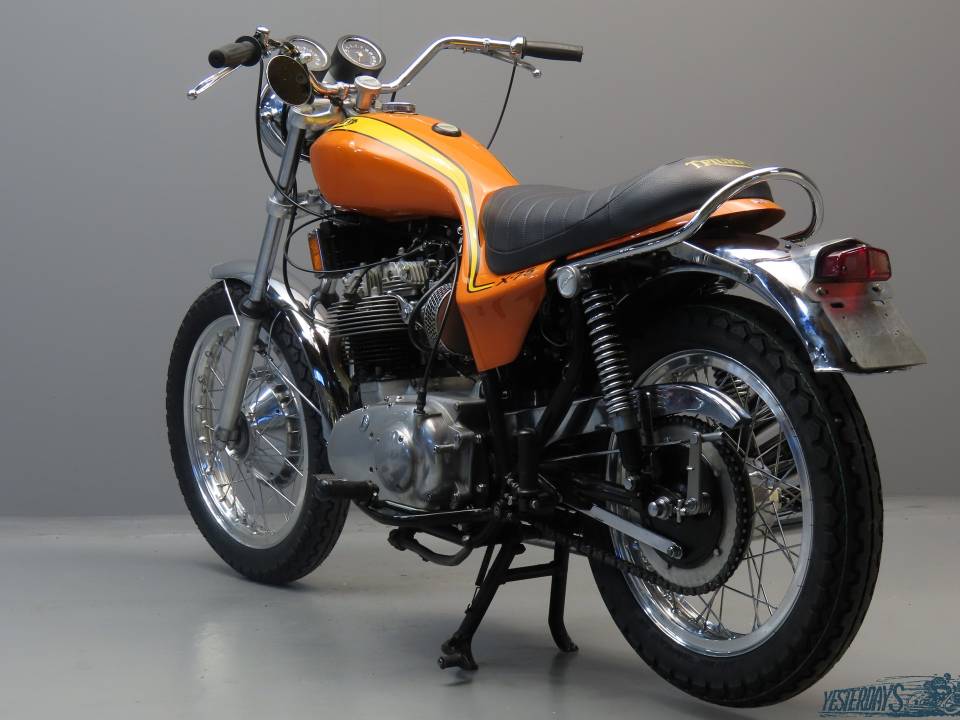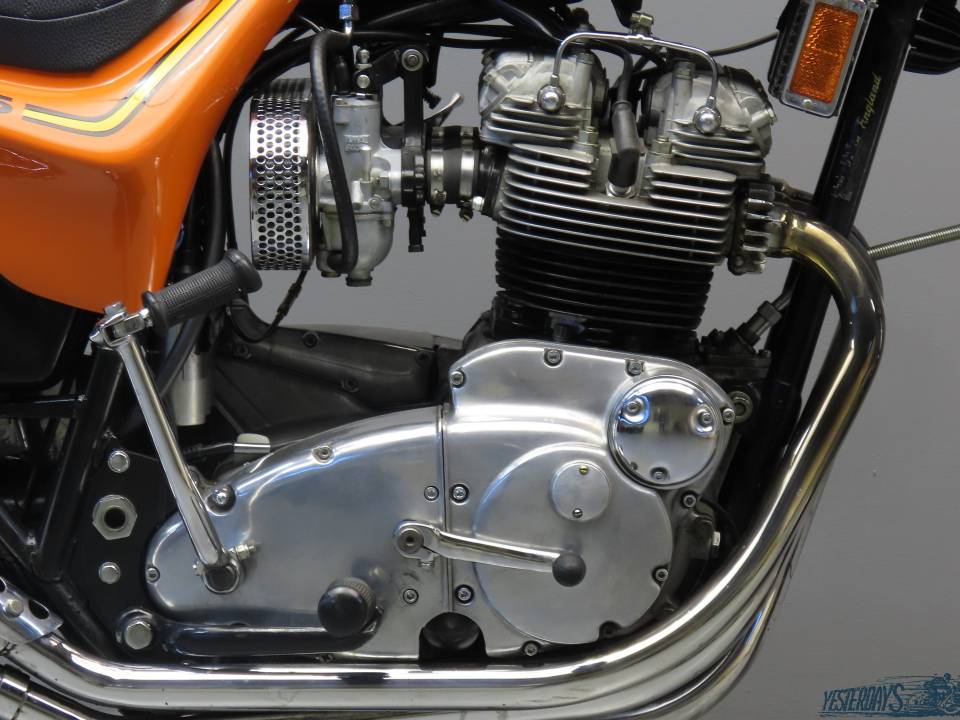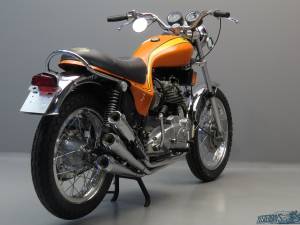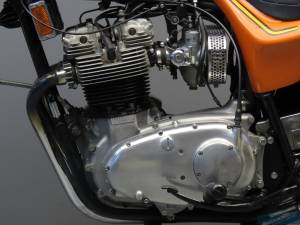1972 | Triumph X-75 Hurricane
Descrizione
Triumph 1973 X-75 Hurricane 740 cc ohv triple frame & engine # TRX75 XH 01920
When, in 1968, the new BSA Rocket 3/Triumph Trident triples were shown to the American BSA-Triumph management, they were not impressed. They knew Honda had the CB750 coming along and they felt the triple’s price of $1800 was too high and that technical details (like vertically split crankcases and pushrod ohv valve train) were far from “cutting edge”. However, they acknowledged that the bike was fast, and a sales team led by BSA Vice-president Don Brown decided to launch the bike by using a Rocket-3 to set some records at Daytona, records which were broken in 1971 by the Kawasaki Z1. Fairing specialist Craig Vetter was commissioned by BSA’s US distributor to customise the BSA Rocket 3 to appeal more to American tastes. With its slightly raked frame, extended front fork, up-swept three-pipe exhaust system and eyeball-popping bodywork, there had been nothing like the Vetter BSA before. At BSA-Triumph’s design facility at Umberslade Hall, the design was seen as too “trendy” by chief designer Bert Hopwood; but after very positive public reaction to the design when it appeared on the front of US magazine Cycle World in September 1970, the UK managers changed their minds. They realised they had a large stock of obsolete BSA Rocket-3 parts that could now be turned into a premium-priced motorcycle. By the time the concept reached production in ’72, BSA was on the verge of collapsing and Vetter’s BSA Rocket3 became the Triumph X-75 Hurricane, though it kept the Rocket 3’s inclined cylinder block. Apart from the change of badge, the production Hurricane remained remarkably faithful to Vetter’s original vision. The design went into a limited production run of 1200 and was only sold in the USA. Production stopped in 1973 after the X-75 was unable to meet new American noise standards. The American magazine Cycle Guide tested the X-75 in its December 1972 issue and praised the bike’s striking appearance, excellent performance and smooth 5-speed gearbox.
This particular machine has been restored a number of years ago and is in excellent condition and an excellent runner.
Dettagli del veicolo
Dati veicolo
- Marca
- Triumph
- Modello
- X-75 Hurricane
- Tipo
- Chopper / Custom
- Prima immatricolazione
- 01/1973
- Anno di fabbricazione
- 1972
- Chilometraggio
- 0 km
- Numero di telaio
- Non fornito
- Numero del motore
- Non fornito
- Numero del cambio
- Non fornito
- Matching numbers
- NO
- Numero di proprietari precedenti
- Non fornito
- Café Racer
- NO
Dettagli tecnici
- Tipo di motore
- In linea | 4-Tempi | OHV
- Potenza (kW/CV)
- 46/63
- Cilindrata (ccm)
- 744
- Cilindri
- 3
- Avviamento
- Kickstarter
- Raffreddamento
- Aria
- Cambio
- Manuale
- Innesto (cambio)
- Non fornito
- Marce
- 5
- Trazione
- Catena
- Freno anteriore
- Tamburo
- Freno posteriore
- Tamburo
- Carburante
- Benzina
- Peso a vuoto (kg)
- 0.205
Configurazione individuale
- Colore carrozzeria
- Arancione
Condizione, registrazione e documentazione
- Condizioni
- Restaurato
- Ha un rapporto
- Non fornito
- Condizione
- Rapporto di ispezione dell'ordine
- Immatricolato
- Pronta a partire
- Senza incidenti

